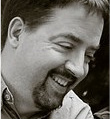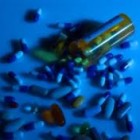
Addiction, Recovery and the Dangers Young People Face Today
|
Robotripping, dank, bath salts, spice, triple C’s, skittles, Roxies, Oxys, Xanibars, K2, if these names don’t sound familiar, the current trends in juvenile drug abuse are as surprising to you as they were to me. A recovering addict myself, I was alarmed to learn what kinds of drugs are being used by our youth today. The drugs are mostly synthetic, increasingly lethal, tend to require medically supervised withdrawal, and, in many cases, are undetectable by drug test. In 2010, SAMHSA reported 10.1 percent of youths aged 12 to 17 were current illicit drug users. That same year, the rate of current illicit drug use was higher among young adults aged 18 to 25, stood at 21.5 percent. The rate of binge drinking in 2010 was 40.6 percent for young adults aged 18 to 25. Heavy alcohol use was reported by 13.6 percent of persons aged 18 to 25. According to the CDC about 90 percent of the alcohol consumed by youth under the age of 21 in the United States is in the form of binge drinks.





